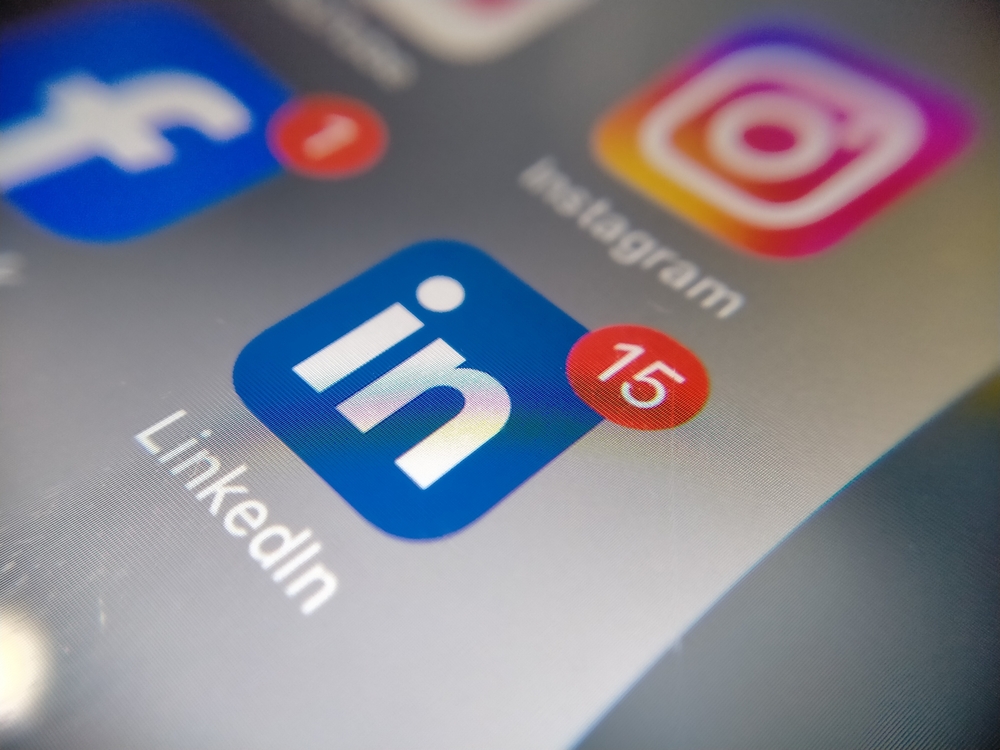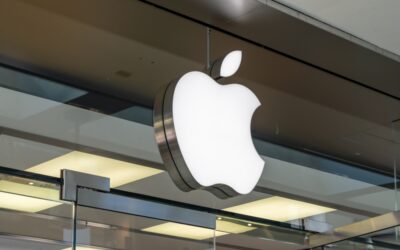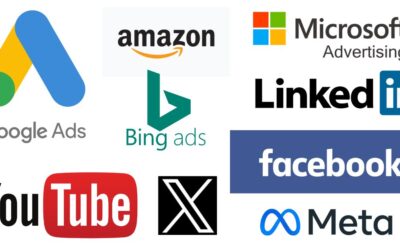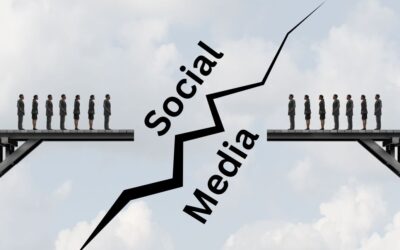In the ever-evolving landscape of social media, platforms come and go, trends shift, and what was once a personal network can easily transform into a professional powerhouse. LinkedIn, a platform originally conceived as a space for job seekers and professionals to connect, has gradually evolved into a central hub for business activities, networking, and content sharing. As it celebrates its 20th anniversary in 2023, LinkedIn’s relevance in the business world is more pronounced than ever. With a staggering 930 million members and the backing of tech giant Microsoft since its acquisition in 2016, LinkedIn is now being recognized as the new Facebook for businesses.
What is LinkedIn?
LinkedIn began its journey in 2003 as a professional networking site, aiming to connect job seekers with potential employers and create a space for professionals to share their resumes and career achievements. Over the years, it has evolved beyond a mere online resume repository. Today, LinkedIn is a comprehensive professional network where users can share insights, publish articles, engage in discussions, and build a personal or company brand. The platform’s evolution has been marked by significant milestones, including its acquisition by Microsoft in 2016 for $26.2 billion, a move that has only strengthened its position in the digital world.
In 2023, LinkedIn celebrated its 20th anniversary, marking two decades of connecting professionals across industries. With 930 million members globally, it stands as a testament to the growing need for a professional digital presence. Unlike Facebook, which began as a platform for personal connections and has since expanded into a broader social media space, LinkedIn has maintained its focus on the professional sphere. This focus has allowed it to become the go-to platform for business leaders, entrepreneurs, and professionals looking to connect, learn, and grow.
LinkedIn’s Growth: A Platform with Momentum
LinkedIn’s growth over the past two decades has been nothing short of impressive. From its humble beginnings in Reid Hoffman’s living room to becoming a global professional networking powerhouse, LinkedIn’s journey has been marked by strategic decisions, technological advancements, and a deep understanding of its users’ needs.
One of the key turning points in LinkedIn’s history was its acquisition by Microsoft in 2016. This acquisition provided LinkedIn with the resources and technological infrastructure needed to scale its operations and introduce new features that enhance user experience. Under Microsoft’s ownership, LinkedIn has integrated with other Microsoft products, such as Office 365 and Dynamics, providing users with seamless access to tools that enhance productivity and collaboration.
LinkedIn’s user base has also seen significant growth. As of 2023, the platform boasts 930 million members, making it one of the largest professional networks in the world. This growth is not just in numbers but also in the quality of users. LinkedIn is home to a diverse range of professionals, from entry-level employees to top executives, CEOs, and thought leaders. This diversity makes LinkedIn a valuable platform for businesses of all sizes, offering opportunities to connect with potential clients, partners, and employees.
Why LinkedIn is the New Facebook for Businesses
Facebook has long been the go-to platform for businesses looking to connect with consumers, build brand awareness, and engage with a broad audience. However, as the social media landscape evolves, LinkedIn is emerging as the new Facebook for businesses, particularly for those looking to target a professional audience. Here’s why:
1. A Hub for Business Leaders and Decision-Makers
One of LinkedIn’s most significant advantages over Facebook is the quality of its user base. LinkedIn is home to more millionaire CEOs, business leaders, and decision-makers than any other social media platform. These individuals are not just passive users; they are actively engaging with content, sharing insights, and connecting with other professionals. For businesses, this means that LinkedIn is not just a platform to reach a broad audience but a place to connect with key decision-makers who can drive business growth.
2. A Go-To Source for Industry News and Insights
LinkedIn has established itself as a go-to source for industry news, trends, and insights. Unlike Facebook, where content can range from personal updates to viral videos, LinkedIn’s content is more focused on professional development, industry trends, and business insights. This makes it an invaluable resource for businesses looking to stay informed about the latest developments in their industry and for professionals seeking to enhance their knowledge and skills.
The platform’s algorithm prioritizes content that is relevant to its users’ professional interests, ensuring that users are presented with high-quality, industry-specific content. This makes LinkedIn an ideal platform for businesses to share thought leadership content, industry insights, and company updates.
3. A Leading Platform for Recruitment
Recruitment is another area where LinkedIn outshines Facebook. With 61 million people searching for jobs on LinkedIn every week, the platform has become the top choice for recruiters and job seekers alike. LinkedIn’s advanced search and filtering options make it easy for businesses to find and connect with the right candidates, while its job posting features allow companies to reach a vast pool of potential employees.
For small businesses, LinkedIn offers an efficient and cost-effective way to attract top talent. By maintaining an active presence on LinkedIn, businesses can showcase their company culture, share employee testimonials, and highlight job openings, making it easier to attract candidates who align with their values and goals.
4. Driving Organic Traffic and Lead Generation
LinkedIn is increasingly becoming a platform for driving traffic to websites, much like Facebook, but with a more professional edge. While Facebook caters to a broad, diverse audience, LinkedIn focuses on career-driven individuals and B2B interactions. This makes LinkedIn especially valuable for businesses targeting professionals, as users are more likely to engage with industry-specific content. By sharing articles, blogs, and insights on LinkedIn, businesses can drive high-quality, relevant traffic to their websites, similar to Facebook but with a sharper focus on professional interests and decision-makers.
LinkedIn’s emphasis on professional content and its user base of decision-makers mean that the traffic generated from the platform is more likely to convert into leads and customers. Businesses can leverage LinkedIn’s content-sharing features, such as articles, posts, and videos, to drive traffic to their websites and capture leads.
Why Every Business Needs a LinkedIn Strategy
Given LinkedIn’s unique position as the leading professional networking platform, it’s clear that every business needs a LinkedIn strategy. Whether you’re a small business looking to connect with potential clients, a startup seeking investors, or an established company recruiting top talent, LinkedIn offers a wealth of opportunities to achieve your business goals. Here are some reasons why a LinkedIn strategy is essential for every business:
1. Building a Strong Professional Brand
In today’s digital age, a strong online presence is essential for any business. LinkedIn provides businesses with the tools to build and enhance their professional brand. By creating a company page, businesses can showcase their products and services, share company updates, and engage with their audience. Regularly posting relevant content, such as industry news, thought leadership articles, and customer testimonials, can help establish your business as a trusted authority in your field.
2. Expanding Your Network
LinkedIn’s core feature is its ability to connect professionals across industries and geographies. For small businesses, this means access to a vast network of potential clients, partners, and collaborators. By actively engaging with your LinkedIn network—through liking, commenting, and sharing content—you can expand your reach and connect with individuals and companies that align with your business goals.
3. Enhancing B2B Marketing Efforts
LinkedIn is an ideal platform for B2B marketing. With its targeted advertising options, businesses can reach decision-makers in specific industries, job functions, or companies. LinkedIn’s ad platform allows businesses to create highly targeted campaigns, ensuring that your message reaches the right audience at the right time. Additionally, LinkedIn’s Sponsored Content and InMail features provide businesses with direct access to potential clients and partners, increasing the likelihood of generating leads and driving conversions.
4. Attracting Top Talent
As mentioned earlier, LinkedIn is the top platform for recruitment, making it an essential tool for businesses looking to attract top talent. By maintaining an active LinkedIn presence, businesses can showcase their company culture, highlight employee success stories, and share job openings. This not only helps attract candidates but also enhances your employer brand, making your company a desirable place to work.
5. Gaining Insights and Staying Informed
LinkedIn’s focus on professional content makes it an excellent resource for staying informed about industry trends, competitor activities, and market developments. By following industry leaders, joining relevant groups, and engaging with thought leadership content, businesses can gain valuable insights that can inform their strategies and decision-making processes.
Tips for Developing a Successful LinkedIn Strategy
Now that we’ve established the importance of LinkedIn for businesses, let’s explore some tips for developing a successful LinkedIn strategy:
1. Optimize Your Company Page
Your LinkedIn company page is the face of your business on the platform. Ensure that your page is complete, with a professional logo, a compelling company description, and relevant contact information. Use keywords in your description to improve your page’s visibility in LinkedIn searches. Regularly update your page with fresh content, including company news, industry insights, and product updates.
2. Create and Share Valuable Content
Content is king on LinkedIn. To engage your audience and establish your business as a thought leader, create and share valuable content that resonates with your target audience. This could include blog posts, articles, videos, infographics, and case studies. Focus on content that addresses your audience’s pain points, offers solutions, and provides actionable insights. Regularly post content to keep your audience engaged and to increase your visibility on the platform.
3. Leverage LinkedIn Groups
LinkedIn Groups are a great way to connect with like-minded professionals, share insights, and engage in discussions relevant to your industry. Joining and actively participating in LinkedIn Groups allows you to expand your network, gain visibility, and position your business as a thought leader in your field. You can also create your own LinkedIn Group around a specific topic or niche, inviting members to join and engage with your content. This not only helps you build a community around your brand but also provides an additional channel for sharing your expertise and driving traffic to your website.
4. Engage with Influencers and Thought Leaders
LinkedIn is home to numerous influencers and thought leaders who have built large followings by consistently sharing valuable insights and engaging content. Influencers such as Gary Vaynerchuk, Jeff Weiner, Richard Branson, and Simon Sinek are well-known for their impactful content on leadership, entrepreneurship, and business strategy. Engaging with their content—by commenting on their posts, sharing their insights, or even mentioning them in your own content—can help you gain visibility among their followers and attract a broader audience to your business.
Moreover, collaborating with LinkedIn influencers, whether through partnerships, guest posts, or interviews, can amplify your brand’s reach and credibility. Influencers often have a deep understanding of LinkedIn’s algorithm and audience preferences, making them valuable allies in your LinkedIn marketing strategy. Take a look at some of the top influencers on Linked:
- Gary Vaynerchuk
Communications Expert, Author, Chairman of VaynerX, CEO of VaynerMedia
Followers: 5,042,989
LinkedIn Profile Link: https://www.linkedin.com/in/garyvaynerchuk/ - Jeff Weiner
Management Expert, Executive Chairman at LinkedIn
Followers: 10,697,253
LinkedIn Profile Link: https://www.linkedin.com/in/jeffweiner08/ - Richard Branson
Businessman, Investor, Author, Founder of the Virgin Group
Followers: 19,720,368
LinkedIn Profile Link: https://www.linkedin.com/in/rbranson/ - Simon Sinek
Author, Motivational Speaker
Followers: 6,001,177
LinkedIn Profile Link: https://www.linkedin.com/in/simonsinek/
5. Utilize LinkedIn Analytics
To ensure the success of your LinkedIn strategy, it’s crucial to track and analyze your performance using LinkedIn’s built-in analytics tools. LinkedIn provides detailed insights into how your content is performing, including metrics on engagement, reach, and follower growth. By regularly reviewing these analytics, you can identify which types of content resonate most with your audience, determine the best times to post, and refine your strategy accordingly.
Additionally, LinkedIn’s analytics can help you track the effectiveness of your advertising campaigns, allowing you to make data-driven decisions to optimize your ad spend and maximize your return on investment (ROI).
6. Invest in LinkedIn Advertising
While organic reach on LinkedIn can be powerful, LinkedIn advertising can significantly boost your visibility and help you reach a more targeted audience. LinkedIn’s advertising platform offers a variety of options, including Sponsored Content, Sponsored InMail, and Display Ads, each designed to achieve different marketing objectives.
- Sponsored Content: This is a great way to promote your posts to a broader audience beyond your followers. Sponsored Content appears directly in the LinkedIn feed, blending seamlessly with organic posts, which can lead to higher engagement rates. Use this feature to promote blog posts, whitepapers, or product launches.
- Sponsored InMail: Sponsored InMail allows you to send personalized messages directly to the LinkedIn inboxes of your target audience. This can be particularly effective for lead generation, event invitations, or personalized offers. Unlike traditional email marketing, Sponsored InMail messages are delivered only when the recipient is active on LinkedIn, increasing the likelihood of engagement.
- LinkedIn Display Ads: These ads appear on the side or top of the LinkedIn feed and are excellent for brand awareness campaigns. Display Ads can be targeted based on a variety of factors, including industry, job function, company size, and more, ensuring that your message reaches the most relevant audience.
We recently listed Linkedin as one of the 7 Top Advertising Platforms as of 2024. By strategically investing in LinkedIn advertising, you can amplify your reach, generate high-quality leads, and ultimately drive more conversions for your business.
7. Engage Consistently and Authentically
Consistency is key when it comes to building a strong presence on LinkedIn. Regularly posting content, engaging with your audience, and participating in discussions will help you stay top-of-mind with your connections and followers. However, it’s important to balance consistency with authenticity. LinkedIn users value content that is genuine and provides real value.
Avoid the temptation to focus solely on promotional content. Instead, aim to share a mix of content that includes industry insights, company updates, thought leadership, and personal experiences. This approach not only helps you build credibility but also fosters stronger connections with your audience.
8. Encourage Employee Advocacy
Your employees can be some of your most powerful advocates on LinkedIn. Encourage them to share company content, engage with your posts, and even create their own LinkedIn content that highlights their experiences and expertise. Employee advocacy can significantly extend your reach on LinkedIn, as each share, like, or comment by an employee exposes your content to their network.
Additionally, when employees are active on LinkedIn, it helps to humanize your brand and gives potential clients, partners, and recruits a glimpse into your company culture. To facilitate employee advocacy, consider creating a company-wide LinkedIn strategy that includes guidelines, content suggestions, and incentives for active participation.
9. Host Webinars and Live Events
LinkedIn has introduced features that allow businesses to host live events and webinars directly on the platform. This is a powerful tool for engaging with your audience in real-time, sharing valuable insights, and establishing your business as a thought leader in your industry.
Hosting a LinkedIn Live event or webinar can help you connect with your audience on a deeper level, answer questions in real-time, and showcase your expertise. These events can also be recorded and repurposed as content for later use, maximizing their impact.
LinkedIn’s transformation over the past 20 years from a professional networking site to a dynamic platform for business growth, recruitment, and content sharing is a testament to its adaptability and relevance in the modern business landscape. With 930 million members and a strong focus on professional content, LinkedIn is increasingly becoming the new Facebook for businesses—especially those seeking to connect with decision-makers, industry leaders, and top talent.
For small businesses, the importance of having a robust LinkedIn strategy cannot be overstated. From building a strong professional brand and expanding your network to driving organic traffic and attracting top talent, LinkedIn offers a wealth of opportunities to achieve your business goals.
As you develop and refine your LinkedIn strategy, remember to focus on creating valuable content, engaging authentically with your audience, and leveraging the platform’s advanced tools and features. By doing so, you’ll be well-positioned to harness the full power of LinkedIn and drive your business success in the digital age.





